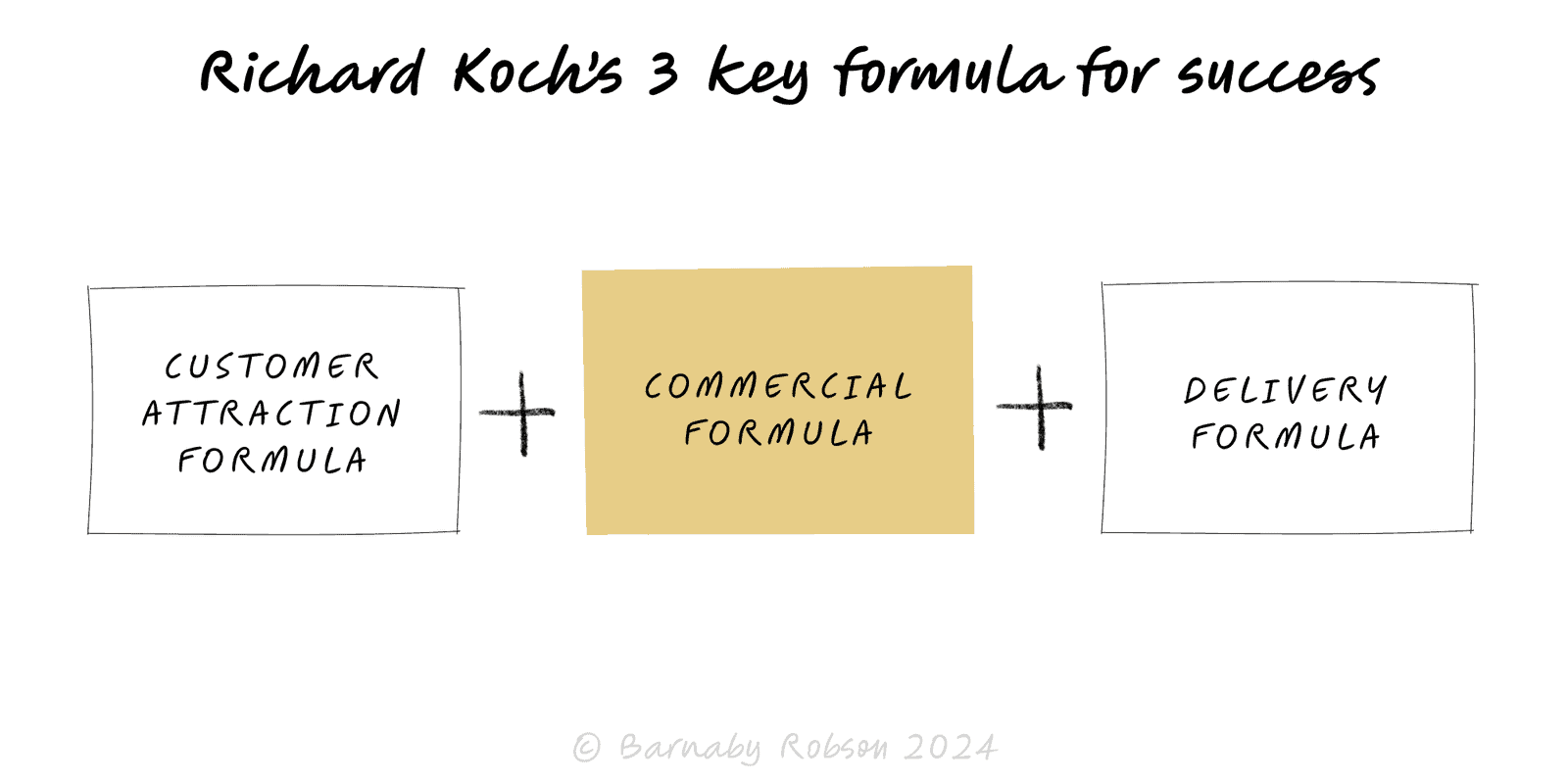Richard Koch’s 3 key formulas
Richard Koch

In The Star Principle, Koch says successful “star” ventures routinise a small set of formulas that work together: how they attract customers, how they deliver ever-better output at scale, and how they make money structurally (margins).
1) Customer Attraction Formula – a reliable way to win an ever-increasing number of profitable customers who also buy more over time. Identify the target niche and why they switch (new benefits, convenience, price/value).
Concentrate distribution/channel nodes that compound (referrals, partners, network effects).
Make acquisition repeatable: one message → one offer → one funnel → measured payback.
2) Delivery Formula – a machine for consistent, higher-quality output at rising volume and falling unit cost. Same high standard, on time, every time; last year → this year quality improves.
Doubling volume without panic; work delegated to the lowest competent level.
Documented standards, visible cadence; calm, ordered operations; nobody indispensable.
3) Commercial Formula – structural margin logic that stays thick as you scale. Either price premium (preference) or cost advantage (simplicity/scale) — ideally both.
Positive unit economics at realistic mix; cash conversion stays strong as you grow.
Moats that defend margin: switching costs, network effects, proprietary data, brand.
Venture design – pressure-test if you can articulate all three formulas before scaling.
Operating reviews – quarterly deep-dives: CAC→LTV engine (attraction), throughput/SLA (delivery), gross margin & cash cycle (commercial).
Commercial due diligence – reconstruct the target’s actual formulas; check repeatability and integrity across the three.
Turnarounds – fix the binding constraint first (often delivery or commercial), then re-ignite attraction.
Define the niche & promise – who you serve and the difference they feel.
Write the three formulas on one page (max five bullets each); name owners and weekly metrics.
Instrument – Attraction: CAC/payback, referral %, channel ROIs. Delivery: SLA, defect rate, unit cost, time-to-double capacity. Commercial: gross margin, contribution margin, cash conversion.
Run small probes to harden each formula; kill tactics that don’t compound.
Check integrity – ensure formulas reinforce rather than fight each other (e.g. promo that breaks margin, quality that chokes capacity).
n/a